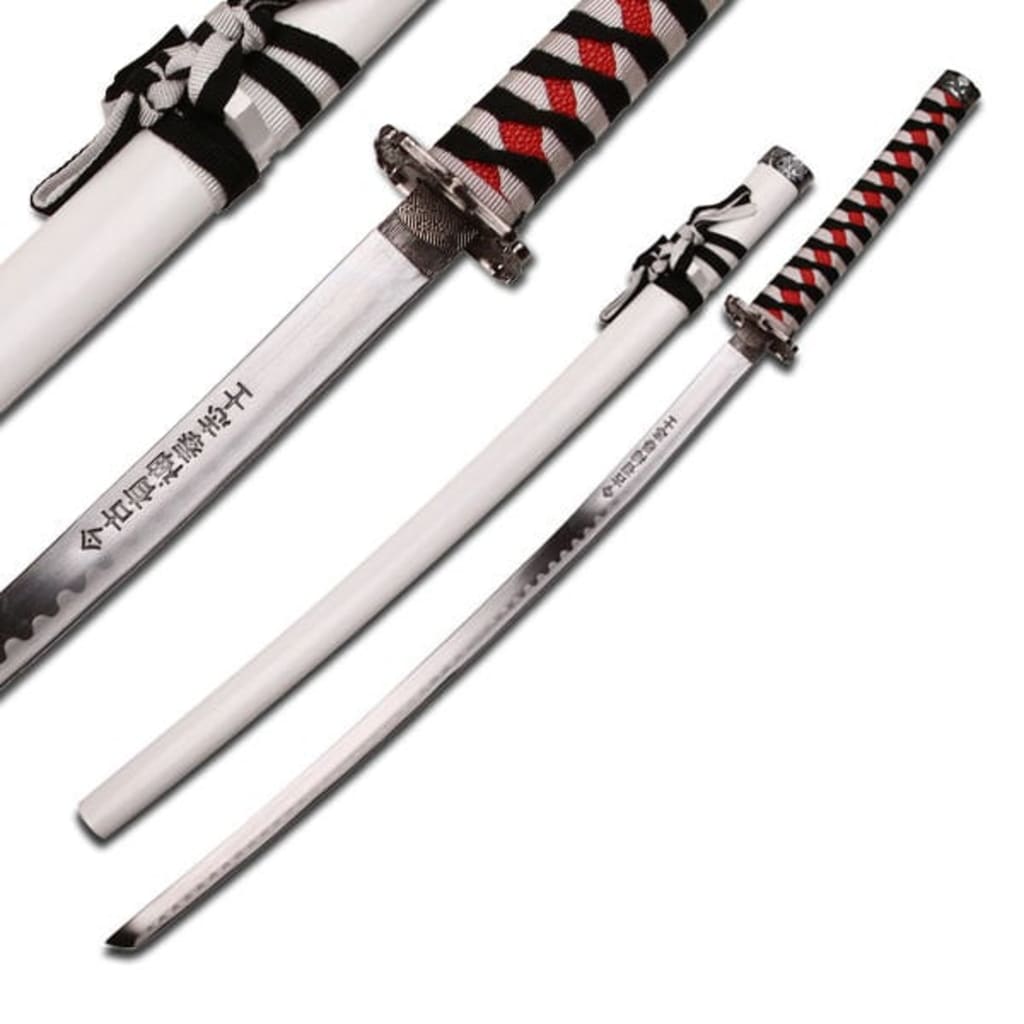The Journey of a Kanji Sword From Forging to Display
Kanji Sword

The Kanji sword, admired for its elegance, precision, and cultural significance, embarks on a remarkable journey from the fiery depths of the forge to its place of honor on display. This essay delves into every phase of this voyage, illuminating the laborious artistry, historical past, and spiritual core that characterize this sword.
The age-old craft of swordsmithing, which has been passed down through the generations, is at the core of this weapon. Expert craftsmen carefully choose and forge layers of high-carbon steel, folding and pounding them several times to produce a blade with remarkable sturdiness and strength. The steel is heated to extremely high temperatures using a technique called "tatara," after which it is meticulously molded and tempered to obtain the ideal combination of hardness and flexibility.
Shaping the Form: Crafting the Blade, Guard, and Handle
In the intricate process of crafting a Kanji sword, shaping the appearance involves meticulous attention to the blade, guard, and handle. Swordsmiths carefully shape the blade to achieve the desired curvature, known as "sori," optimizing its cutting efficiency and balance. With the blade forged, the swordsmith meticulously shapes and refines its form, paying meticulous attention to every detail.
The curvature of the blade, known as "sori," is carefully crafted to optimize cutting efficiency and balance. The guard, or "tsuba," is intricately designed to not only protect the hand but also serve as a decorative element, often featuring symbolic motifs or intricate patterns. The handle is wrapped in traditional materials such as ray skin and silk cord, providing a comfortable and secure grip, often featuring symbolic motifs or intricate patterns. Additionally, the handle is meticulously wrapped in traditional materials like ray skin and silk cord, ensuring a comfortable and secure grip while adding to the sword's aesthetic appeal.
Engraving and Embellishment
For some Kanji swords, additional embellishments are added to enhance their beauty and symbolic significance. Engraving and embellishment play a pivotal role in elevating the sword from a functional tool to a masterpiece of artistry and symbolism. Through intricate engravings, known as "horimono," skilled artisans adorn the blade with depictions of nature, historical figures, or religious motifs, infusing each sword with layers of meaning and cultural significance. These engravings not only enhance the sword's visual appeal but also serve as a testament to the swordsmith's mastery and creativity.
The blade is further adorned with "kinzogan," or gold and silver inlays, which highlight particular design aspects and lend an air of refinement and opulence. Whether they represent mythological themes or carry words of valor and dignity, these embellishments turn every Kanji sword into a one-of-a-kind creation deserving of respect and adoration. In the end, decoration and engraving help to elevate the sword from a tool to a treasured representation of Japan's creative and cultural traditions.
Assuring Authenticity and Quality
A Kanji sword must pass stringent testing to guarantee its authenticity and high quality before it can be considered complete. Expert craftsmen test the blade's strength, balance, and sharpness by slicing through tatami mats that are hanging and bundles of straw. A crucial initial phase in guaranteeing the genuineness and excellence of this sword is testing and certification.
Expert artisans carefully evaluate the edge, sturdiness, and balance of the blade by subjecting it to a battery of tests. These tests establish the sword's artistry in addition to confirming its performance. After the sword is judged acceptable, it is given a "mekugi," or certification, proving its genuineness and excellence. This certification serves as a guarantee to collectors and enthusiasts, affirming that this sword has met the stringent standards of excellence upheld by generations of swordsmiths.
Honoring the Legacy of the Kanji Sword
Finally, the Kanji sword takes its rightful place on display, where its beauty and craftsmanship can be admired and appreciated by all. Whether showcased in a museum, private collection, or martial arts dojo, the sword serves as a tangible link to Japan's rich cultural heritage and martial traditions. As observers gaze upon its gleaming blade and elegant form, they are reminded of the centuries-old legacy of this sword and the enduring spirit of craftsmanship and honor it represents.
In summary, respecting the Kanji sword's lineage is an important way to support Japan's rich martial arts and cultural traditions. The sword represents discipline, loyalty, and mastery and goes beyond its use as a weapon to become a symbol of craftsmanship, honor, and tenacity. Whether on exhibit in historical sites, treasured in individual homes, or used in martial arts training facilities, the Kanji sword is a material reminder of the hardships and triumphs of the past.
Everyone who witnesses it is filled with awe and respect because of its dazzling blade and graceful form. We respect the legacy of this blade by remembering the accomplished craftspeople, fighters, and protectors who have upheld its traditions throughout the ages, ensuring that its legacy continues to endure for generations to come.
This sword's journey from forging to display, then, is evidence of the lasting legacy of skill, custom, and cultural value. This journey is characterized by great reverence for the historical and spiritual significance of the sword, unrelenting dedication to perfection, and painstaking attention to detail at every turn. The Kanji is a timeless representation of Japan's rich cultural past and the enduring spirit of the swordsmith's trade, captivating and inspiring enthusiasts worldwide.
About the Creator
Mai Sophia
A Writer/blogger by day, a knife enthusiast and survivalist by night. I've reviewed a lot of products and have helped people make the right purchase
Enjoyed the story? Support the Creator.
Subscribe for free to receive all their stories in your feed. You could also pledge your support or give them a one-off tip, letting them know you appreciate their work.






Comments (1)
Liked it.